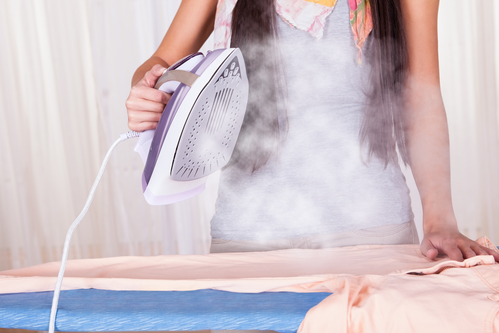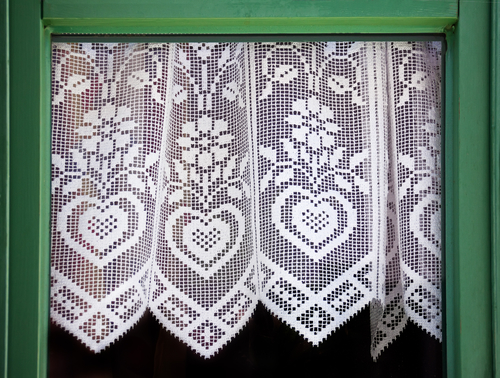We all love the warmth and feel curtains and drapes give to a room. But, when it comes to caring for them, things might get a bit tricky.
How often should you be cleaning your window treatments? Can you just toss them in your washing machine? How do you handle and protect delicate sheers? Cleaning curtains is not THAT difficult, and you are about to find out why!
What to do an a weekly basis
If your curtains’ fabrics are delicate, then shaking instead of vacuuming your curtains will help protect them. Weekly care doesn’t have to be more than just vacuuming your heavier-weight curtains using the upholstery brush attachment. It is also a great way to catch any stains early and address them properly before they set in, which could make cleaning them more challenging.
Don’t forget to keep an eye on the curtain rod, as it is an area that accumulates lots of dust every day. You can use a Swiffer or any dusting tool with a long handle and gently dust the area.
Alternatively, you can use your vacuum cleaner (the wand). For your drapery panels or lined drapes, a gentle shake every night when they are drawn closed will help prevent dust from accumulating and setting.
Tip: Curtains and drapes are two different things, although their terms are often used interchangeably. Curtains are usually made of lightweight fabrics and don’t tend to be lined. Drapes, on the other hand, extend to the floor, are made of heavyweight fabrics, and are lined most of the time).
Note: When vacuuming your curtains or drapes, make sure you secure the embellishments (i.e. buttons).
How to Machine Wash your Curtains
First of all, make sure your curtains are machine-washable. For that reason, check the label. If you are still unsure, spot-test a small area (i.e. a corner) with a solution of liquid dish soap or laundry detergent and water. Just a small amount will do.
When it comes to sheer and lace curtains, machine-wash (gentle cycle) or hand-wash them in cold water after you put them in a mesh bag or an old pillow to protect them from damage and, of course, fraying.
And, don’t forget to remove all hardware from the curtain before you wash it.
Note: After washing, check whether the curtains can be dried in a clothes dryer. If they can, select the low setting or line drying. For lightweight fabrics that don’t need to be ironed, you can hang them directly after machine-washing them and let them air dry. Or if you have a back yard, hang them on the clothesline.
Iron Tips:
1. If you want to iron your curtains much easier, stop the dryer before they are completely dry. They should be slightly damp. This won’t allow wrinkles to set. Speaking of ironing window treatments, curtains can also be ironed on their reverse side (mind the stitching so that it doesn’t break).
2. If you notice that some seams have puckered, use a spray bottle to spritz some water (lightly). Pull the seams to size again and reattach any metal hardware once the curtains are completely dry.
3. When washing your curtains, and if you want to wash other items as well, make sure they are colorfast. However, it is suggested you wash the curtains alone to avoid any unpleasant surprises.
When NOT to wash draperies
If the lining and the drapery are not made of the same fibre, then one of them might shrink, causing the other to hang poorly. The same applies to draperies that have been damaged by the sun. If you notice that the fabric has weakened, then it’s best to hand-wash them gently or, even better, let a professional handle them.
Also, draperies with pleats are better off in the hands of a professional because if you machine wash them, they may lose their shape.
How to Dry and Steam Clean your Curtains
If your curtains are not machine washable, they probably need dry cleaning (check the label). It is important to follow the manufacturer’s instructions in regard to the proper care of your curtains because any cleaning method used besides the ones recommended may damage the curtains (i.e. shrink).
Steam cleaning is only suitable for machine washable curtains as they are the only ones that can hold up to the high pressures and temps of a steam cleaner.
So, if you want to freshen up your curtains, steam cleaning them is an excellent idea as you don’t have to take them down, wash them and then hang them again.
How to Care for Delicates (Lace & Sheers)
Make sure to always follow the instructions on the label, tumble lace curtains in the dryer (air cycle) or wash in the washing machine with cold water. Usually, lace today can be either machine- or hand-washed. If yours can be machine-washed, use mild detergent, ideally one intended for delicate fabrics.
Note: To prevent metal hooks from rusting onto your damp lace curtain, place a soft cloth or clean towel under them where they come in contact with the fabric.
Tip: If you dip your lace curtains in a solution with water and starch right after they’ve been washed, you will give extra volume. However, if you want them to have a softer look, hang them while still damp.
As for sheers, since most of them are washable (unless the label mentions hand-wash or dry-clean only), you can follow the same instructions as with lace. The ones that you definitely need to dry-clean are organdy sheers because they are made from a very delicate fabric that the sunlight can easily damage.
Besides caring for your window treatments, selecting them is equally important for your comfort and privacy, as well as the protection of your furnishings. Care and your window treatment’s fabric construction are closely related. Here are some additional tips that can clear the air!
Natural Light
Sunlight makes the colours of the curtains and drapes fade, especially dark ones. If you want more privacy, then it’ll be best to use lined window treatments, shades or even blinds. To make sure you enjoy the natural light entering the room without risking any damage to your curtains, choose light colour fabrics which reflect sunlight and don’t fade as much as darker fabrics do.
In general, polyester and acrylic are great materials to use that withstand sunlight and maintain colour much more than fabrics such as acetate and cotton.
Tip: The use of window films on houses in warm climates is a very good idea to reduce the damaging effects of the sun on your curtains and drapes.




